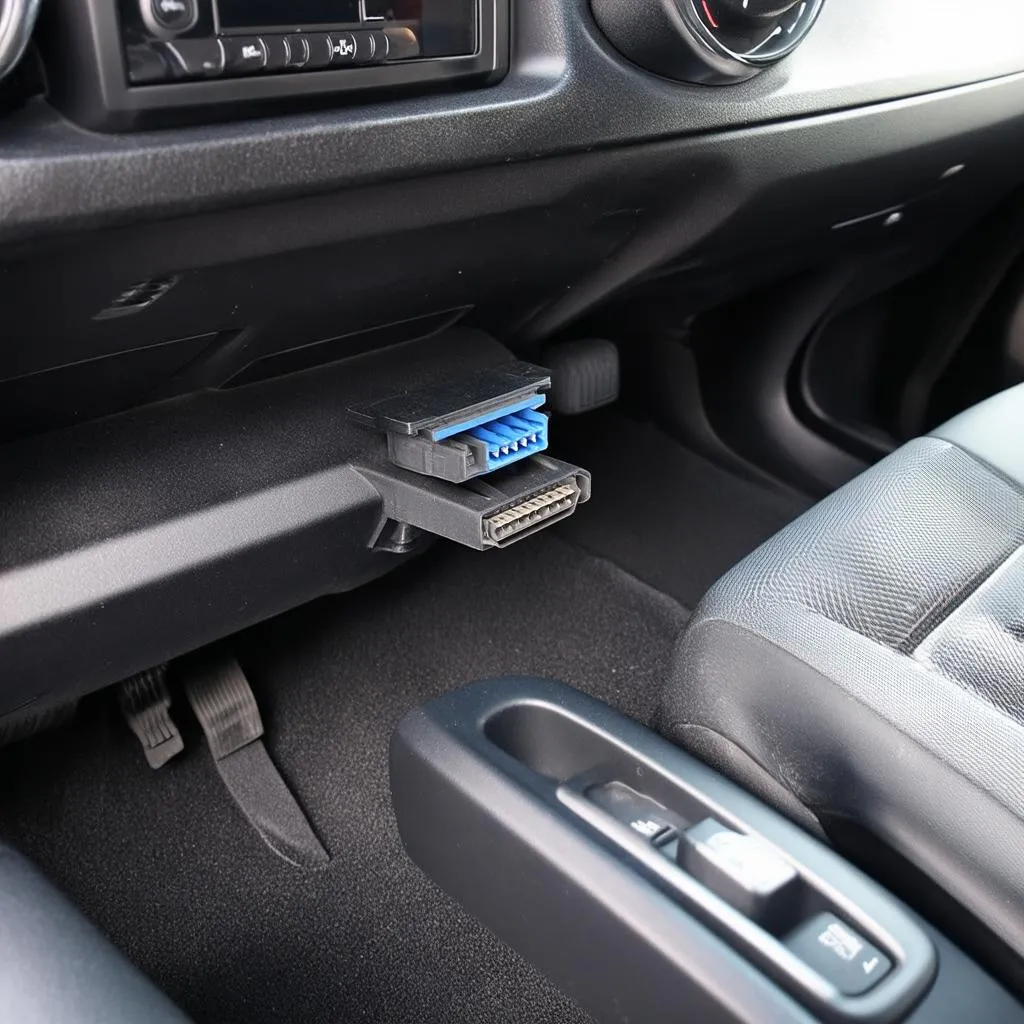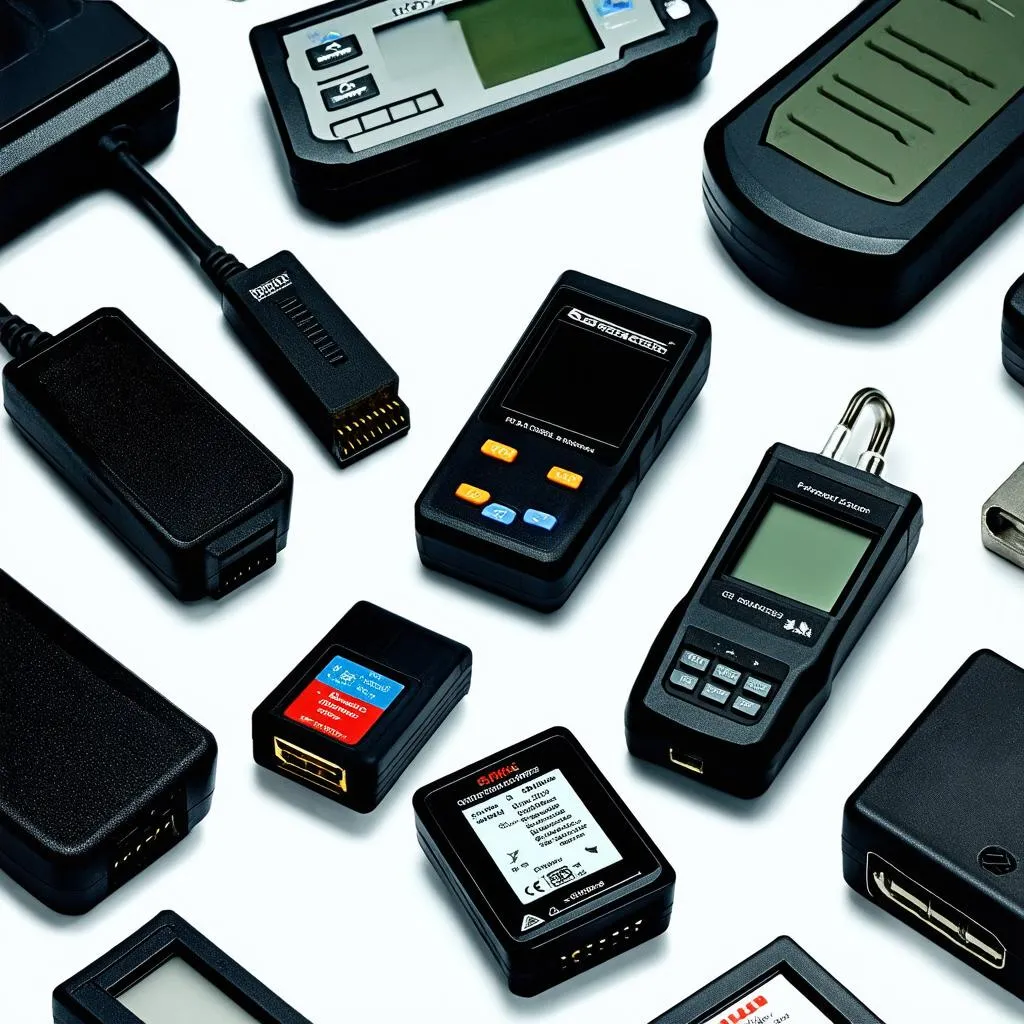“Check Engine” light staring you down again? Ever feel like you’re speaking a different language with your car? We’ve all been there. Luckily, there’s a translator for that: the OBD-II interface. No, it’s not some mystical portal to your car’s soul, though it can feel that way. It’s a standardized system that lets you tap into your car’s brain and understand what it’s trying to tell you.
What is an OBD-II Interface?
Imagine a mechanic plugging a device into your car and instantly knowing what’s wrong. That’s the magic of the OBD-II interface, also known as the On-Board Diagnostics port. It’s a 16-pin connector usually located under the dashboard, driver’s side. Think of it as your car’s data port, similar to the USB port on your computer.
A Little History and a Big Impact
Before OBD-II became mandatory in 1996 (for US vehicles), car diagnostics were like navigating a labyrinth blindfolded. Each manufacturer had their own system, making troubleshooting a nightmare for mechanics. The standardized OBD-II interface changed the game, creating a common language for all cars. This means easier diagnostics, faster repairs, and even DIY potential for car enthusiasts.
 OBD2 Port Location
OBD2 Port Location
Unlocking the Power of OBD-II
So, what can you actually do with an OBD-II interface? Buckle up, because the possibilities are pretty impressive:
- Read and Clear Diagnostic Trouble Codes (DTCs): Remember that pesky “Check Engine” light? The OBD-II interface can read the error codes triggering it, giving you a clear understanding of the problem. It can also clear those codes once the issue is fixed.
- Monitor Real-Time Data: Want to know your engine’s coolant temperature, fuel system status, or even your car’s speed? The OBD-II interface acts as a live feed, giving you valuable insights into your car’s performance.
- Perform Emissions Testing: In many states, emissions tests are a part of vehicle registration. An OBD-II interface can be used to check if your car meets the required emissions standards.
- Customize Your Driving Experience: Some advanced OBD-II scanners allow you to tweak certain vehicle parameters, like adjusting shift points or even disabling the auto start-stop feature.
Choosing the Right Interface
There are numerous OBD-II interfaces available, from basic code readers to advanced professional-grade tools. Here are some factors to consider:
- Your Needs: Are you a DIY enthusiast looking for basic diagnostics, or a professional mechanic needing in-depth analysis?
- Features: Do you need real-time data monitoring, emissions testing capabilities, or advanced programming features?
- Compatibility: Ensure the interface is compatible with your car’s make, model, and year. You can often find compatibility lists on the manufacturer’s website.
 OBD2 Scanner Options
OBD2 Scanner Options
Beyond the Technical: A Touch of Feng Shui
Interestingly, the OBD-II port can be seen as a car’s “energy point” in Feng Shui. Just like a blocked energy flow in your home can cause disharmony, a malfunctioning component can disrupt the energy flow in your car. By keeping your car well-maintained and addressing issues promptly (with the help of your OBD-II interface, of course!), you ensure a smooth and harmonious driving experience.
Take Control of Your Car’s Health
The OBD-II interface isn’t just a tool for mechanics; it’s a powerful tool for any car owner. By understanding how to use it, you can gain valuable insights into your car’s health, potentially save money on repairs, and even enhance your overall driving experience.
Need help choosing the right OBD-II interface or deciphering those cryptic error codes? Contact us via Whatsapp at +84767531508. Our team of automotive experts is here to assist you 24/7.
For further reading on OBD-II and car diagnostics, check out these articles:
Let’s get your car talking—and you understanding!